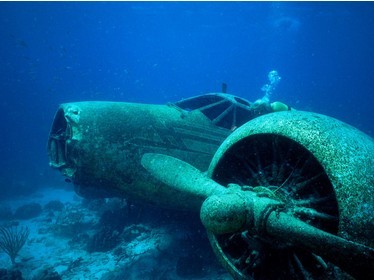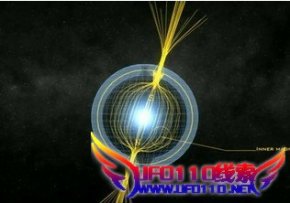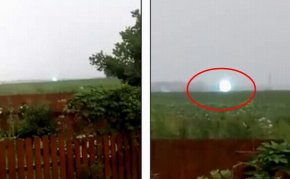古代核战争?(原文)
来源:ufo110线索网(www.ufo110.net) 陆地未解之谜
Did an ancient advanced civilization exist on Earth?
The question is very intriguing and the search for “evidence” to support a positive answer has intrigued Mankind for many decades – if not centuries. Many possibilities have been put forward, from outright statements that Atlantis was a high tech civilization, to the possibility that the Nazca lines might be a prehistoric airport.
Rather than an accumulation of various items of evidence that is then subjected to the possibility that it might be either alien or advanced, it is more scientific – and perhaps better- to focus on the quest for the “best evidence”: a single piece of evidence that in itself is the best example to support a conclusion.
In the search for an advanced ancient civilization, what would be this “best evidence”?
One possible item that would classify as “best evidence” exists within the Indus River Valley, where towns such as Harappa and Mohenjo Daro flourished in 3000 BC. The question is why these cities were abandoned. And one answer that has been put forward is that the ancient cities might have been irradiated by an atomic blast.
If true, it would be impossible to ignore the conclusion that ancient civilization possessed high technology.
The story begins when a layer of radioactive ash was found in Rajasthan, India.
It covered a three-square mile area, ten miles west of Jodhpur. The research occurred after a very high rate of birth defects and cancer was discovered in the area.
The levels of radiation registered so high on investigators’ gauges that the Indian government cordoned off the region. Scientists then apparently unearthed an ancient city where they found evidence of an atomic blast dating back thousands of years: from 8,000 to 12,000 years.#p#副标题#e#
The blast was said to have destroyed most of the buildings and probably a half-million people.
Archeologist Francis Taylor stated that etchings in some nearby temples he translated suggested that they prayed to be spared from the great light that was coming to lay ruin to the city.
“It’s so mind-boggling to imagine that some civilization had nuclear technology before we did. The radioactive ash adds credibility to the ancient Indian records that describe atomic warfare.”
When excavations of Harappa and Mohenjo-Daro reached the street level, they discovered skeletons scattered about the cities, many holding hands and sprawling in the streets as if some instant, horrible doom had taken place. People were just lying, unburied, in the streets of the city. And these skeletons are thousands of years old, even by traditional archaeological standards.
What could cause such a thing? Why did the bodies not decay or get eaten by wild animals?
Furthermore, there is no apparent cause of a physically violent death.
A. Gorbovsky, in Riddles of Ancient History, reported the discovery of at least one human skeleton in this area with a level of radioactivity approximately 50 times greater than it should have been due to natural radiation. Furthermore, thousands of fused lumps, christened “black stones”, have been found at Mohenjo-Daro. These appear to be fragments of clay vessels that melted together in extreme heat.
Another curious sign of an ancient nuclear war in India is a giant crater near Bombay. The nearly circular 2,154-metre-diameter Lonar crater (left image), located 400 kilometers northeast of Bombay and aged at less than 50,000 years old, could be related to nuclear warfare of antiquity.
No trace of any meteoric material, etc., has been found at the site or in the vicinity, and this is the world’s only known “impact” crater in basalt. Indications of great shock (from a pressure exceeding 600,000 atmospheres) and intense, abrupt heat (indicated by basalt glass spherules) can be ascertained from the site.
With the apparent discovery of this radiated area, parallels were quick drawn to the Mahabharata, the Indian epic. It reads:
... (it was) a single projectile
Charged with all the power of the Universe.
An incandescent column of smoke and flame
As bright as the thousand suns
Rose in all its splendor...#p#副标题#e#
...it was an unknown weapon,
An iron thunderbolt,
A gigantic messenger of death,
Which reduced to ashes
The entire race of the Vrishnis and the Andhakas.
...The corpses were so burned
As to be unrecognizable.
The hair and nails fell out;
Pottery broke without apparent cause,
And the birds turned white.
After a few hours
All foodstuffs were infected...
....to escape from this fire
The soldiers threw themselves in streams
To wash themselves and their equipment.
Whereas the story of the Mahabharata is indirect evidence, the other discoveries in India pose serious problems for those trying to deny the possibility that this might indeed be evidence of ancient atomic warfare.
Whereas believing in the existence of Atlantis or a highly advanced civilization that might not have left any trace is one thing, to suggest that our ancestors might have wiped themselves out along the same lines we almost did, but only fifty years ago, is a major paradigm shift.
Some skeptics thus stated:
“I am sick and tired of hearing this, and I cannot find any debunks of this either. Anyone who can debunk this, or is this really true?”
That is indeed the question… and an important one. The stakes are high, as one would expect when facing with the best evidence.
So, let us discover what might be the best evidence.#p#副标题#e#
The first question is whether a Francis Taylor existed. There is a Francis Taylor, an American museum director, who died in 1957. He was not an archaeologist. There is a “Francisco Taylor”, but he is not the above quoted Francis Taylor.
Not a good start. Skeptics have also wondered whether the ancient atomic warfare is not a modern invention, to deflect attention from a serious – modern – atomic contamination. In 1998, it was reported that an Indian power stations had some major problems. One had an incident in which 2000 workers became exposed to excess radiation, 300 of which had to be hospitalized.
Surendra Gadekar also investigated the conditions of villagers at Rawatbhatta in Rajasthan and discovered gross radiation-related deformities.
We note that Rawatbhatta is in the same region as the discovery of the “ancient warfare” site. But Gadekar did not find evidence of ancient warfare, but evidence of modern negligence: wood that had been used in the power plant, had then “somehow” made his way into society, where it was subsequently used as wood for a fire. This in itself was a minor incident, but could there have been more serious incidents, whereby it was decided to deflect attention from the present to the ancient past?
We thus find that there no newspapers carried the story of the discovery. The Indian archaeological authorities are not aware of the story. And there is a government laboratory in Jodhpur, Rajasthan.
Might something have gone wrong in the latter?
With the above objections, the case for the best evidence has become more controversial than a clean-cut case.
But in a case such as an ancient high tech civilization, this should not come as a surprise. Rome was not built in one day, and arguing for or against the case of an ancient highly advanced civilization will not take any less time.
There should also not be a rush to judgment: the case for ancient warfare in India is currently better than any contradictory evidence. The bodies of Harappa and Mohenjo Daro remain a mystery, whether or not the other radioactive site turns out to be modern or ancient. The anomalous crater adds power to the possibility. Finally, the fact that all these enigmas are within one general region (as opposed to scattered across the world) adds further weight to the case… but then this should be expected if we might consider this case to be the best evidence.
The problem of the “best evidence” is often that it sounds too good to be true. That is either because it is, or because it is indeed the “best evidence”.
And only careful analysis of the evidence will reveal what it is…
文章来源:ufo110线索网http://www.ufo110.net/原文地址:http://www.ufo110.net/Mysteries/ludi/1055.html

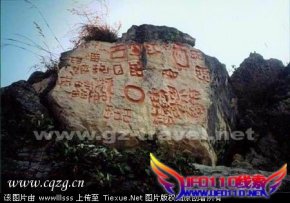
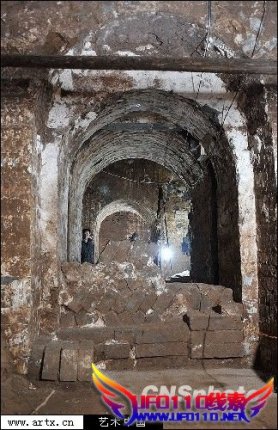
![中国版神秘51区曝光[视频]](/uploads/allimg/150710/2-150G0113T32E-lp.jpg)
